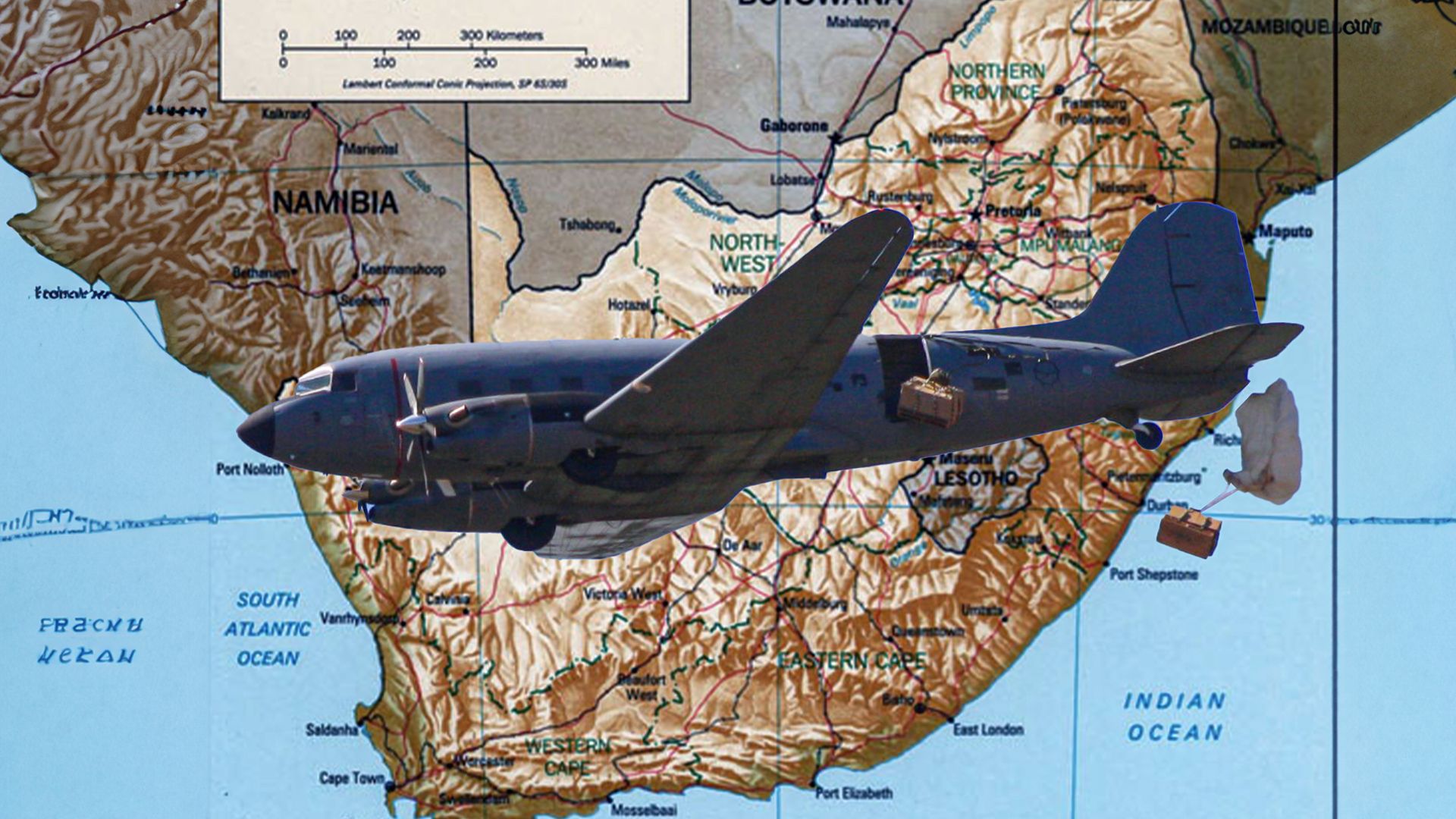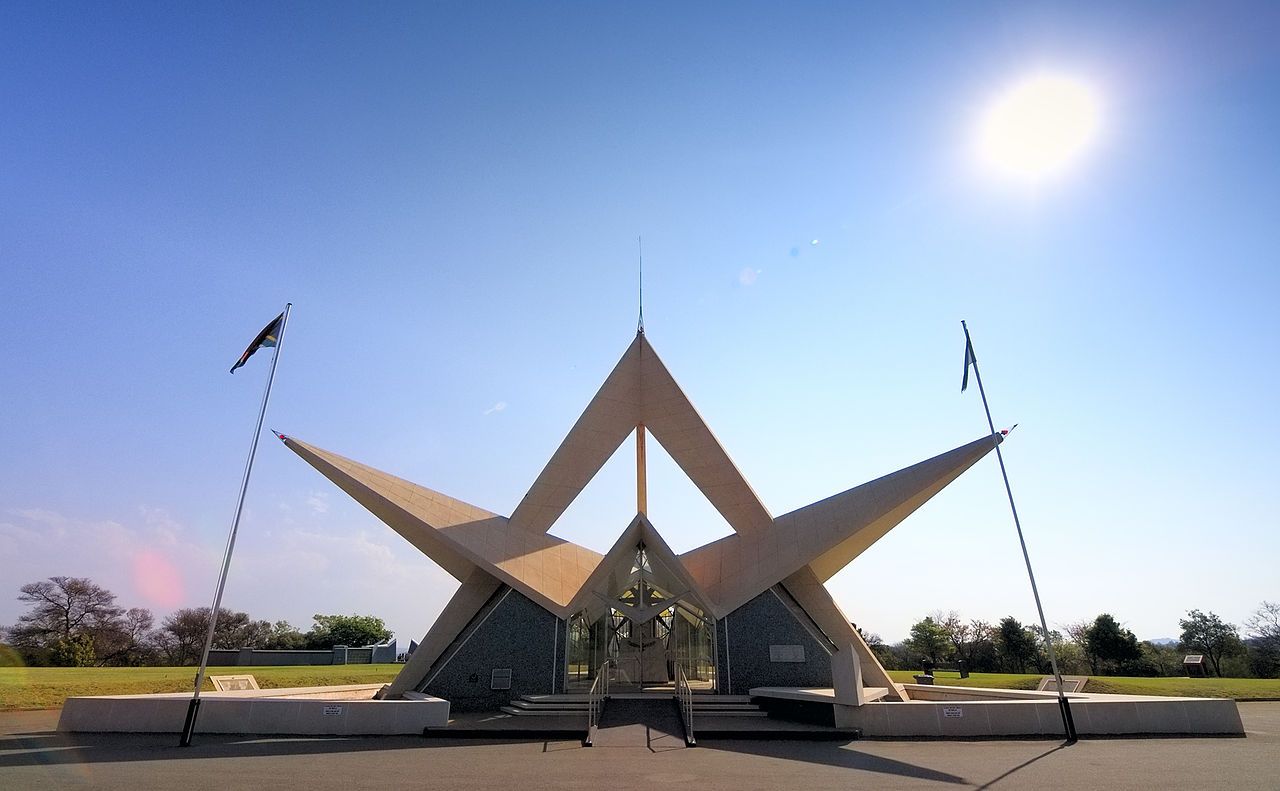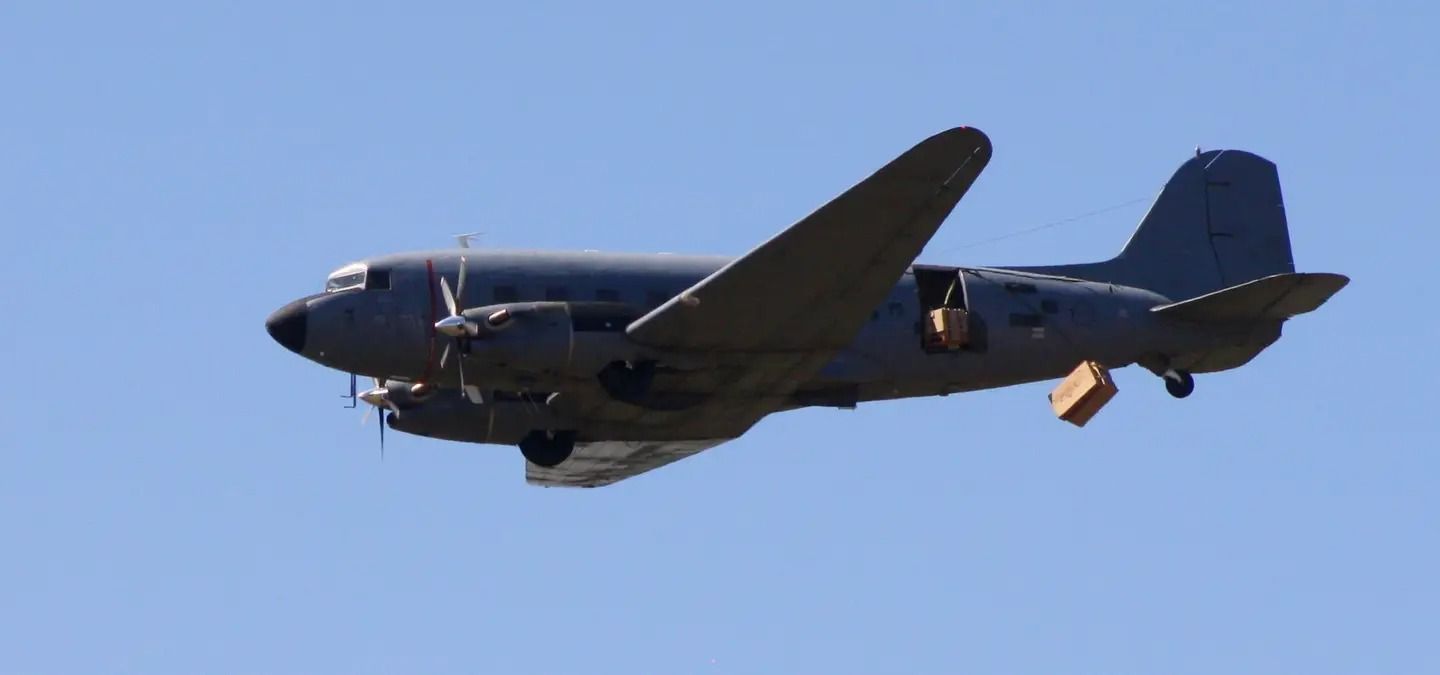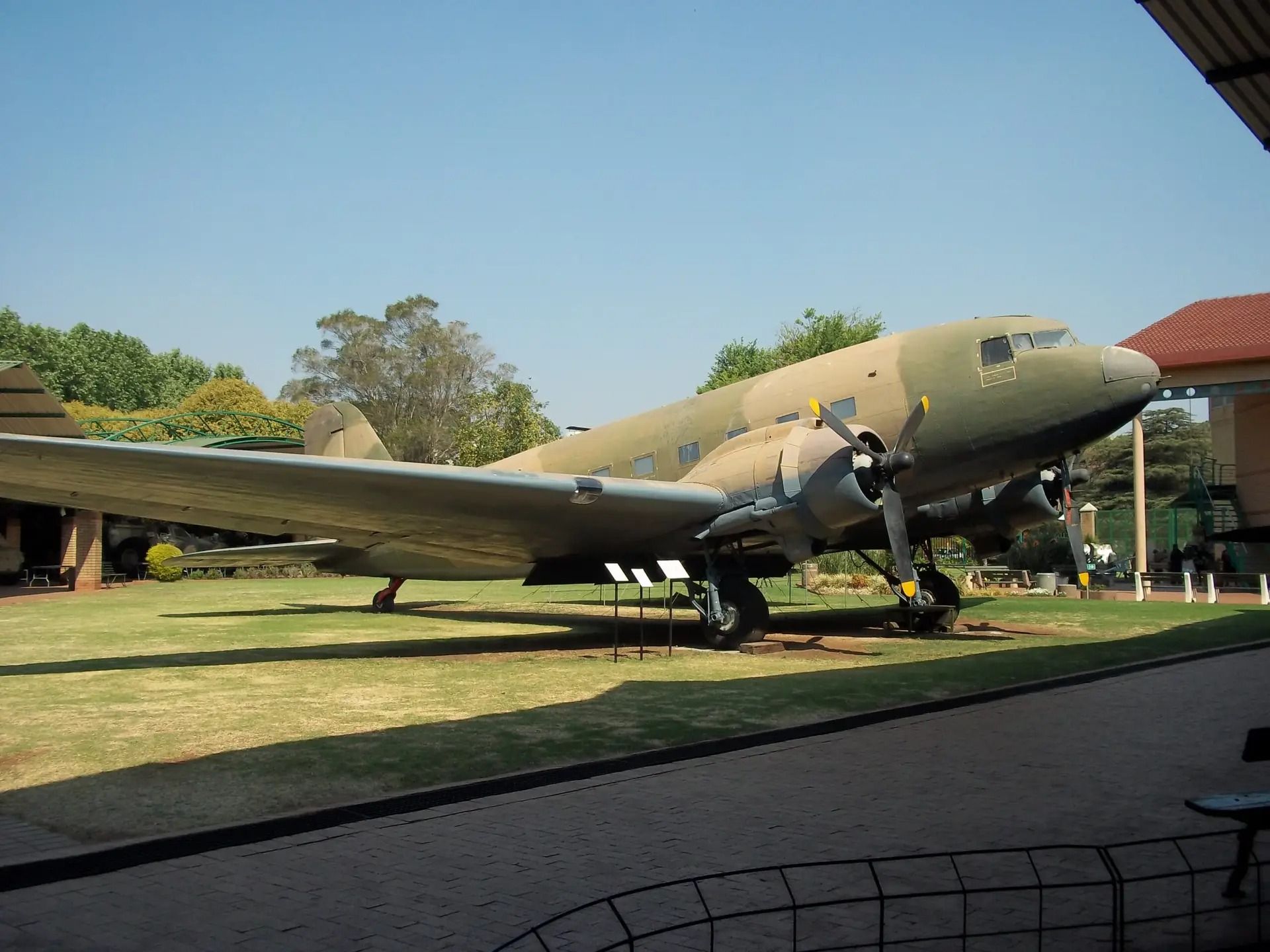Summary
- The South African Air Force is retiring the Douglas C-47 after 81 years of service.
- The fleet peaked in the 1980s with nearly 50 operational C-47s globally.
- Due to lack of maintenance support, the SAAF’s last aircraft will soon be phased out. (189 characters)
“Alright, I offer ya a bargain, Faulkner. About, oh, three miles from here through the bush, there’s a mine airstrip, with an old Dakota, sitting on it right now.”
“What did you say, a what?”
“A Dakota? But it’s alright, I’ve flown in it. And there’s nothing between it and us but a deserted village.”
That dialogue exchange takes place between Father Geoghegen (Frank Finlay) and Col. Allen Faulkner (the late great Sir Richard Burton) in the 1978 film “The Wild Geese,” which I consider one of the most underrated and badass action-adventure films ever made. The film was shot largely in South Africa, and much of the military equipment appearing in the film was indeed furnished by the South African Armed Forces, including the aforementioned Dakota, which appears at the 3:47 mark of this embedded movie clip:
At the time the movie was made, the Dakota (that’s the British Commonwealth designation for the iconic Douglas C-47; we Yanks call her the “Skytrain”) had been in service with the South African Air Force (SAAF) for 35 years. Now, incredibly, the SAAF is finally ready to retire this venerable warbird after a mind-blowing **81 years** of faithful service (which leaves even the 50+ years of service of U.S. Air Force and U.S. Navy warplanes like the KC-135, B-52, C-130, U-2, and P-3 in the proverbial dust)!
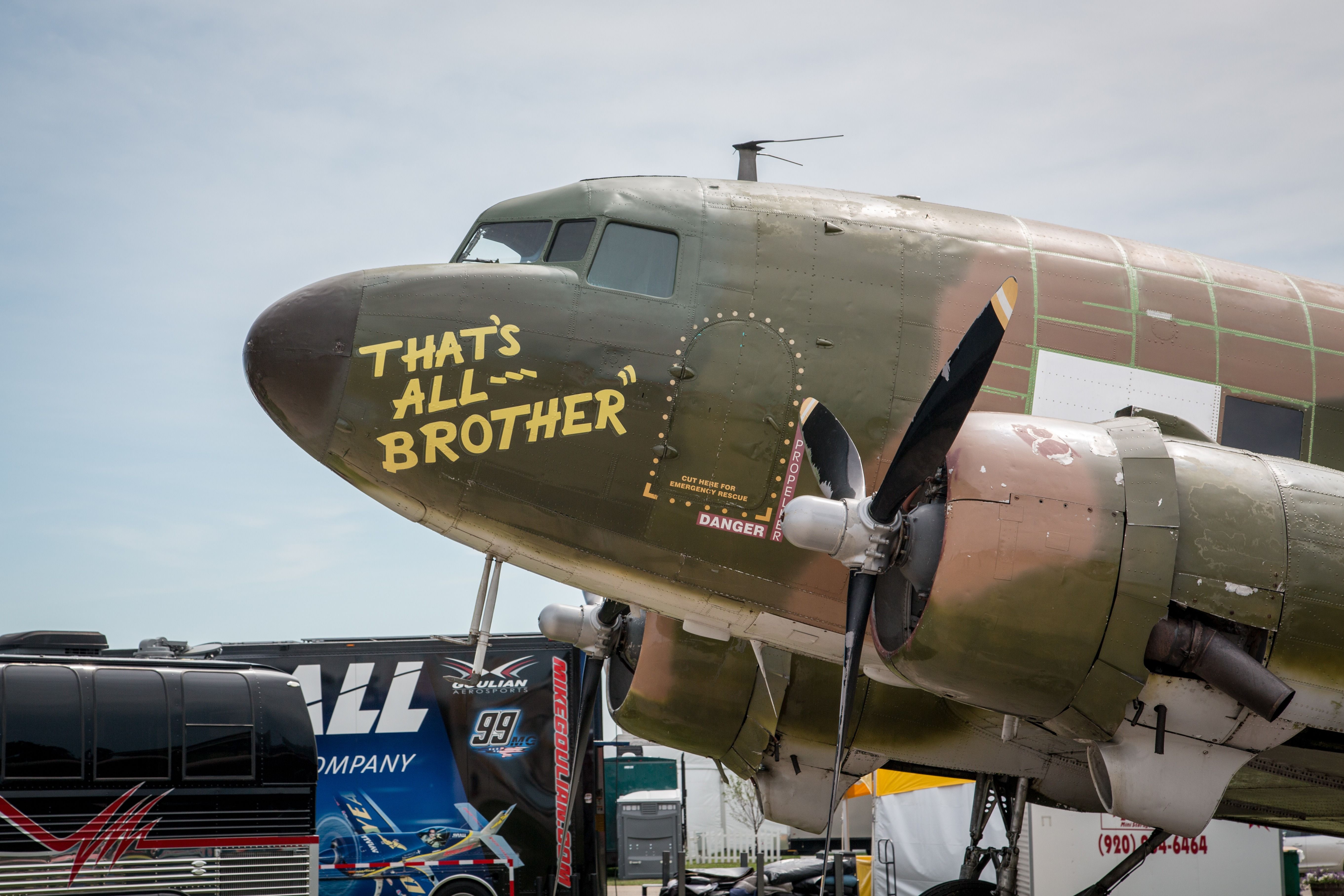
Related
That’s All Brother: How The Formation-Leading Douglas C-47 Was Discovered & Restored
That’s All Brother was the leading aircraft during the D-Day invasion.
On a personal sidebar note regarding “That’s All Brother” (the subject of the above-linked Simple Flying article), I’m proud to note that I myself was one of the donors to the Commemorative Air Force’s (CAF) restoration work on her!
Early history of the SAAF/C-47 relationship
As noted by an article published in The Warzone earlier this month:
“The story of the Dakota in SAAF service stretches all the way back to 1943 when the service was fighting in World War Two. Most extraordinary, perhaps, is that among the very last Dakotas operated by the SAAF, most had been delivered during that conflict, having started life as C-47s manufactured for the U.S. Army Air Forces (USAAF).”
“The SAAF’s Dakota fleet, however, saw its most extensive combat service during the long-running conflict in South West Africa (now known as Namibia) and Angola, supporting South African Defence Force (SADF) units during the so-called Border War between 1966 and 1989. The SADF relied heavily on the Dakota for troop transport, resupply, medical evacuation, paratrooping, and other missions, its importance was heightened by the sanctions on Apartheid South Africa that complicated the procurement of alternative equipment.”
What’s a tad confusing, however, is that the author, Thomas Newdick, mentions the year 1943, but immediately thereafter he includes a Twitter quote from Darren Oliver (Editor of African Defence Review) which lists February *1944* as the delivery date of the oldest Dakota in SAAF service, Registration No. 6825. My educated guess here is Mr. Newdick is hinting that the earlier year was when the SAAF placed the order for the birds, which were then delivered the following year.
In any event, as Newdick reports, by the 1980s the SAAF laid the claim to *the* largest fleet of operational C-47s anywhere on the globe, with nearly 50 total airframes in possession. In the middle of that heady decade, the Dakotas took on a maritime surveillance mission, with search & rescue duties for good measure.
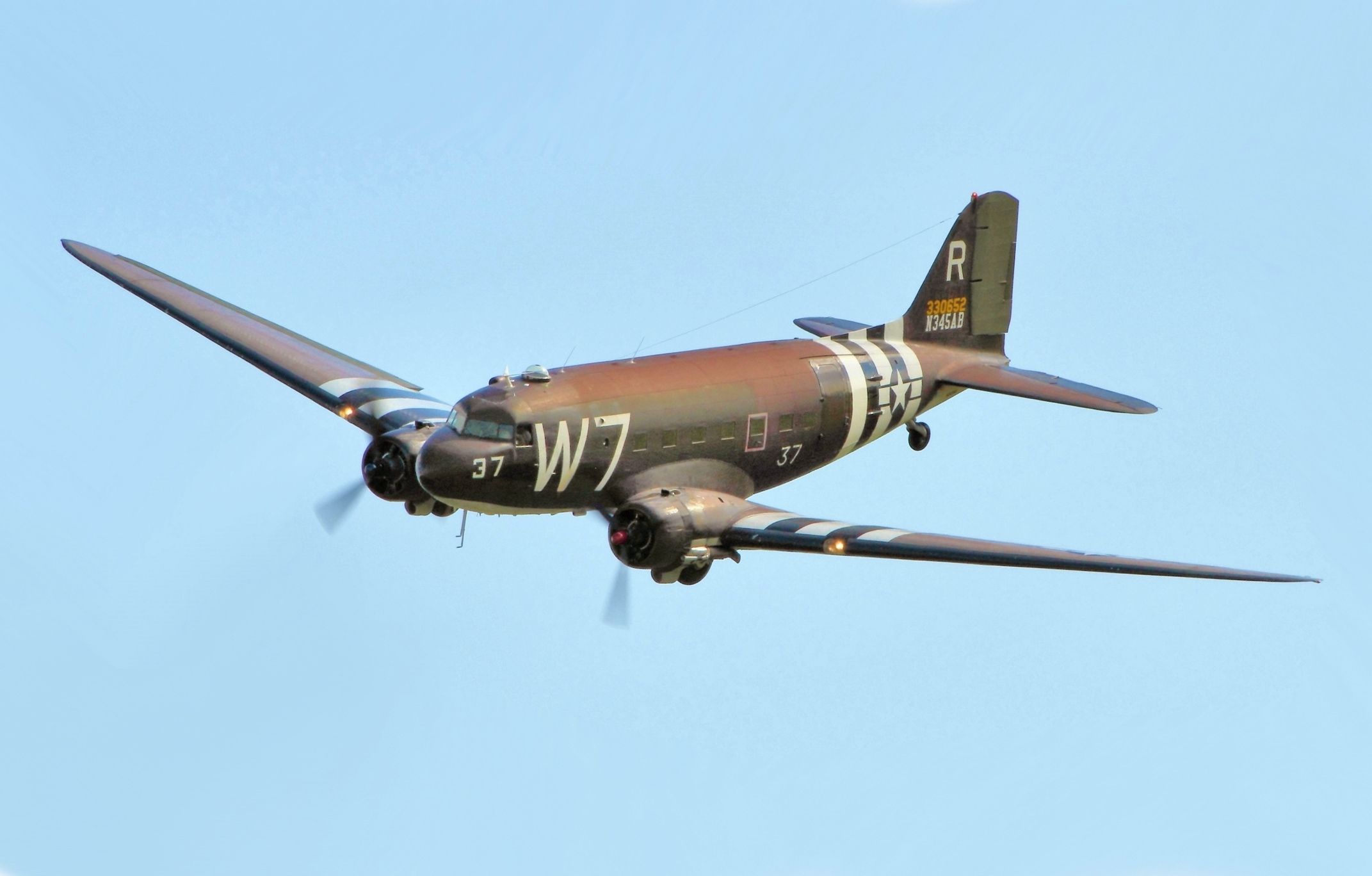
Related
How Douglas Developed The Military C-47 From The Civilian DC-3
During the Normandy invasion, C-47s dropped over 50,000 paratroopers in France.
The present state of SAAF C-47s
However, as the proverb (or “cliché,” if you prefer) goes, “All good things must come to an end.” Concurrently, in the 1990s, a very *bad* thing also came to an end, that being apartheid, i.e. white minority rule in South Africa. As Mr. Newdick elaborates:
“However, the demise of minority rule in South Africa, and the end of the Border War, saw the Dakota — and the SAAF more generally — switch increasingly to peacetime missions, especially humanitarian work. At the same time, Dakota squadrons were rationalized, and the fleet was reduced in size.”
Just how big a reduction are we talking about here? Officially/Theoretically, the SAAF has eight C-47TP (I presume the “TP” stands for “turboprop;” an unofficial local nickname for the bird is the “TurboDak”) airframes on the books, but in reality/in practice, the “TurboDaks” have been grounded for the past two years since the SAAF failed to find a suitable maintenance provider.
Meanwhile, the fleet had been whittled down to five aircraft that were retained in a serviceable status, meaning that they could *potentially* fly again in the future. However, a statement made in the Fall of 2023, Armscor, South Africa’s state arms procurement agency (not to be confused with the Filipino firearms manufacturer of the same name) put a damper even on the hopes for that potential:
“The Dakota C-47TP is a very old aircraft, thus the supporin t for this aircraft is very limited in South Africa and the world. Due to the age of the aircraft, it is no longer supported by the OEM [original equipment manufacturer]. There are no AMOs [aircraft maintenance organizations] with a Dakota C-47TP stipulated on the Operational Specification.”
Accordingly, earlier this month, 35 Squadron (based at Ysterplaat, Cape Town) the SAAF’s last remaining operator of the “TuboDaks,” was duly informed that “the aircraft will be phased out” for good. Although this decision has yet to be formally announced by the SAAF, the proverbial writing is on the wall.
As a possible foreshadowing of that pending retirement, there is already at least one retired SAAF C-47 on display at the South African National Museum of Military History in Johannesburg.
